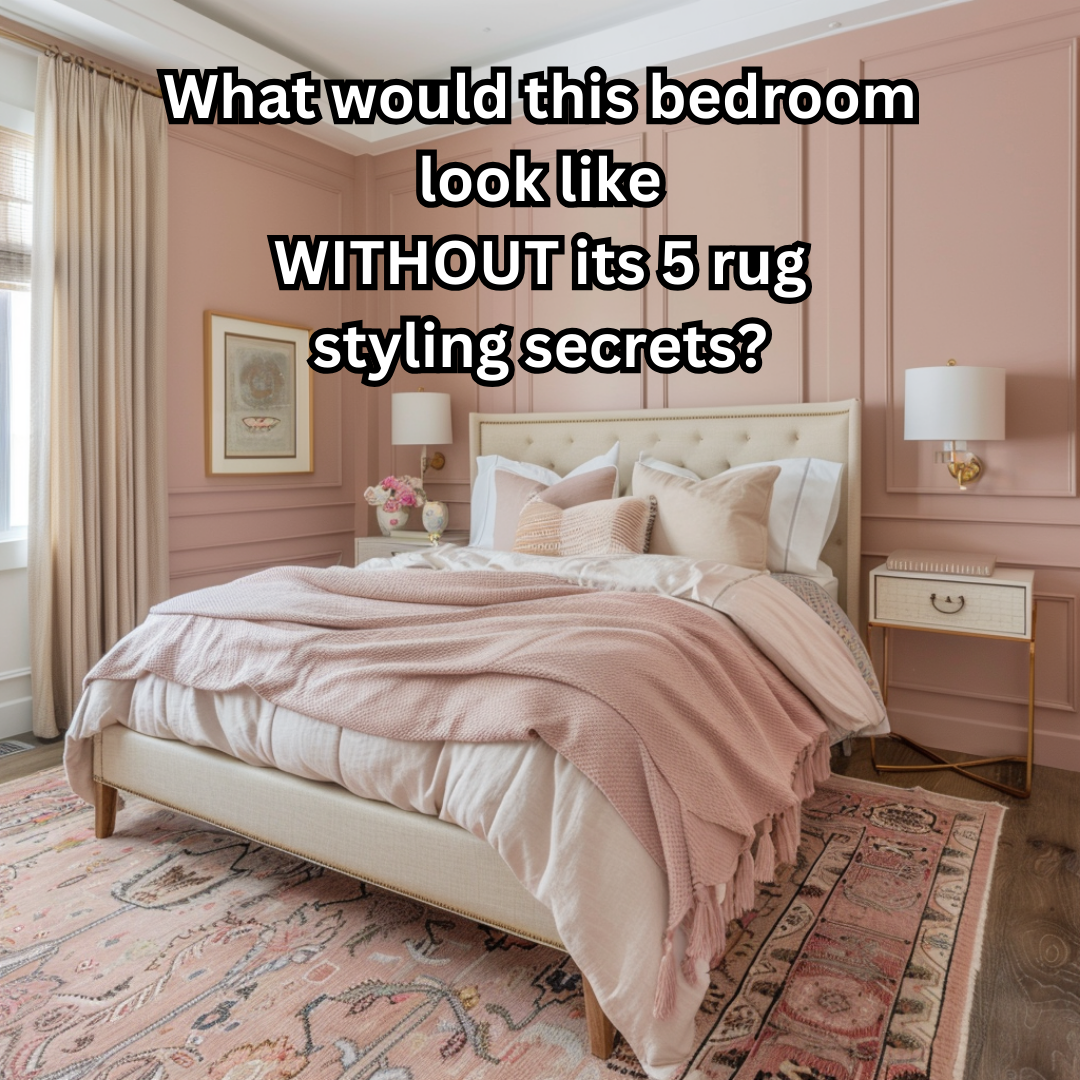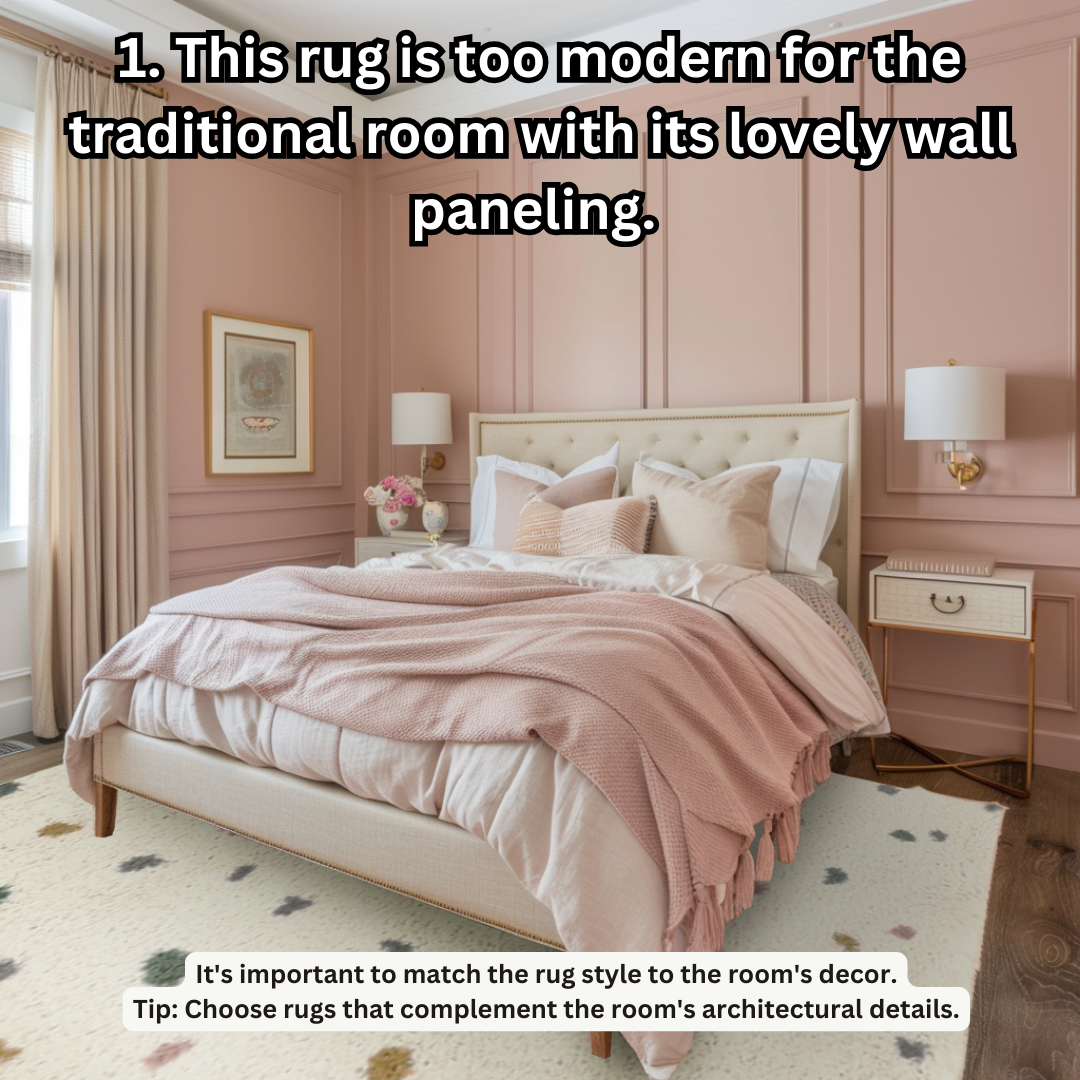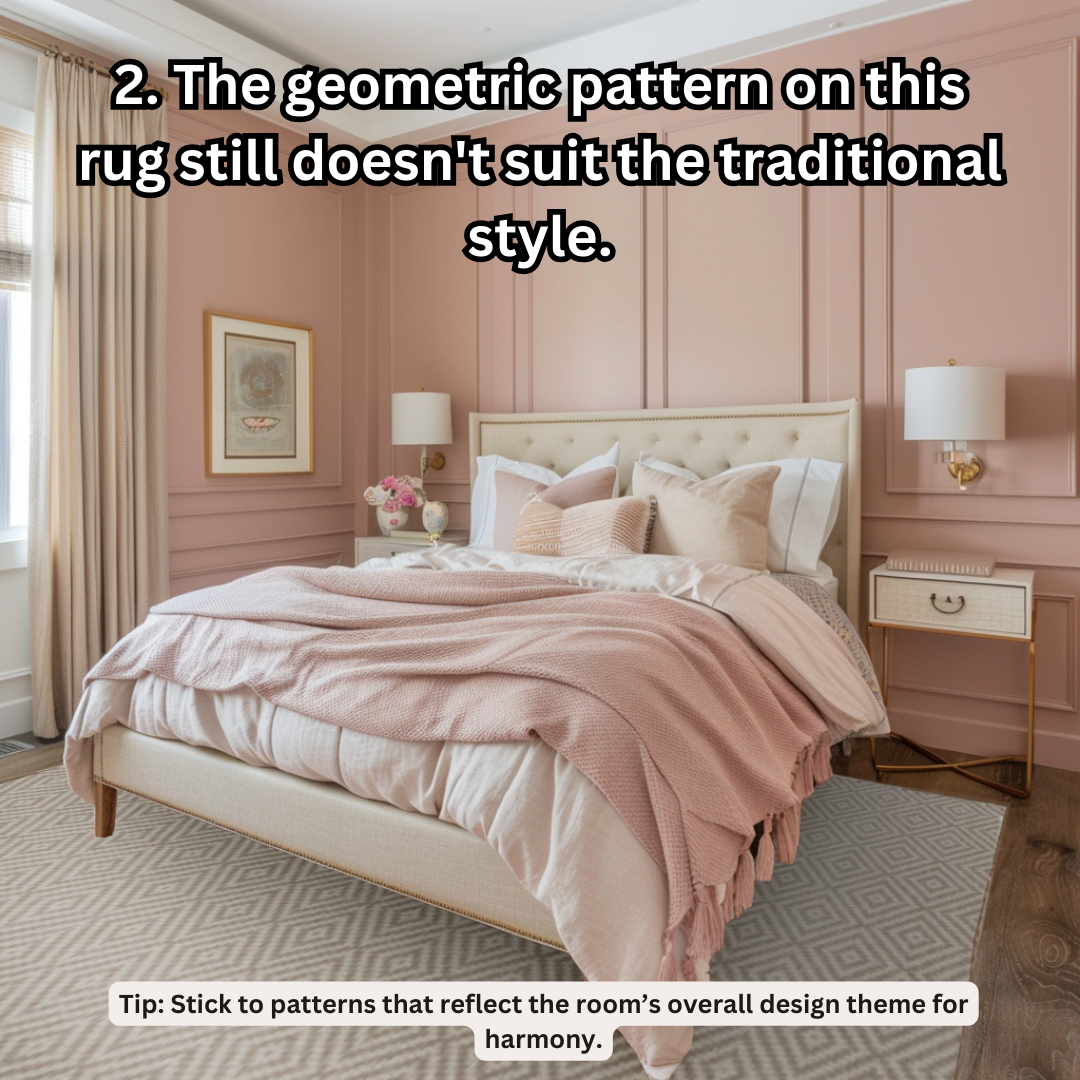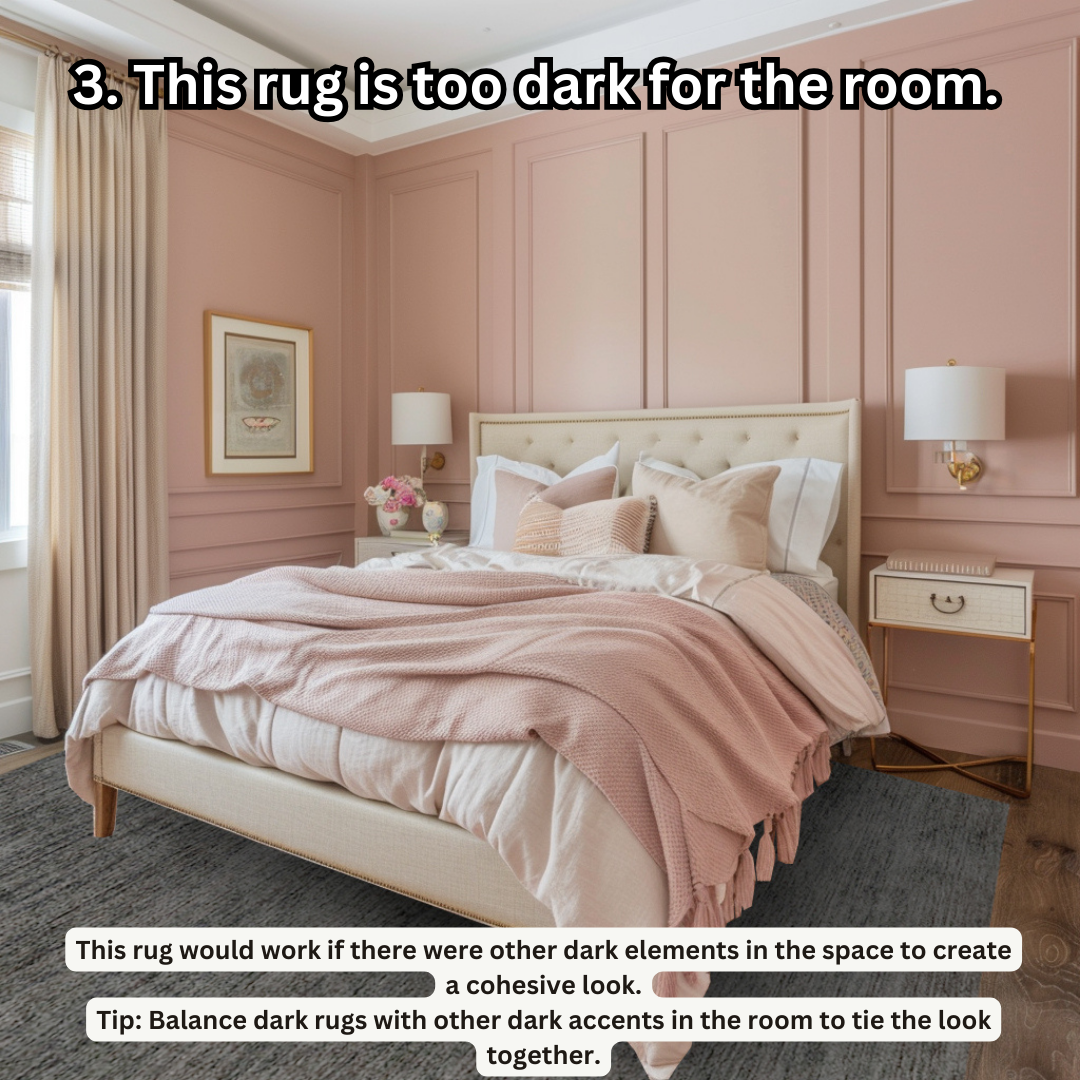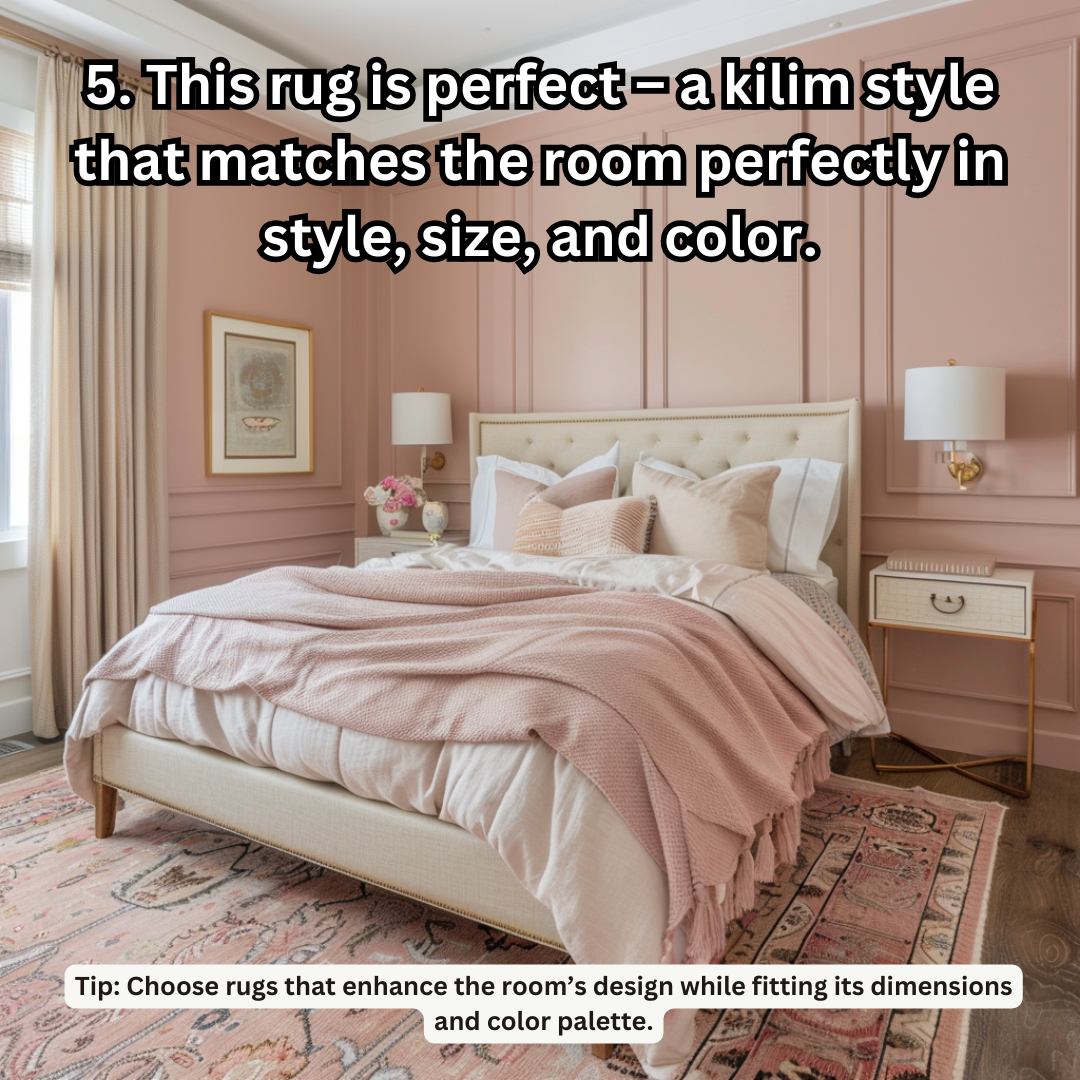The Ultimate Guide to Rugs
There’s no gorgeous-looking room without a rug – that’s a fact. Rugs are essential for creating layers, acting as the crucial element that anchors all other design aspects. Think of rugs as the yin to the yang of your room. But how do you choose the perfect rug? With so many shapes, styles, colors, and patterns to choose from, it can be overwhelming, especially when stores are packed with options.
Don’t worry! My goal is to clear up any confusion and help you decide which rugs are best for your space. Plus, I’ll share where you can shop for rugs to make things even easier. Without further ado, let’s get started! Here’s your ultimate guide to rugs, packed with tips on sizing, mixing patterns and textures, using rugs in open spaces, matching them with existing carpets, and more.
Rug Sizing Tips
Living Room:
Large Spaces: Your rug should be large enough to fit all the front legs of your furniture on it. This anchors the furniture and brings the seating area together.
Small Spaces: In smaller rooms, ensure at least the front legs of one piece of furniture are on the rug while the rest are barely touching it. This creates a sense of space and cohesion without overwhelming the area.
Dealing with a Long and Awkward Living Room? Here's What to Do: When faced with a long and awkward room, I recommend getting rugs made to size from companies like DecoDesigns.ie. Custom rugs can perfectly fit your space, making the room feel cohesive. Alternatively, use two rugs placed side by side or under each distinct zone of your room. This approach helps define different areas and can make the space feel more organized and welcoming.
Dining Room:
The rug should extend at least 24 inches (60cm) beyond the edge of the table to accommodate chairs. This ensures that people aren't awkwardly sitting with two legs on the rug and two legs off, maintaining comfort and balance.
Tip: The rug should imitate the shape of the dining table.
Bedroom:
Under the Bed: Place your rug under the bed, extending out on either side and at the foot, providing a soft landing for your feet.
Side Rugs: Alternatively, use smaller rugs on each side of the bed for a cozy touch without needing a large area rug. In children's bedrooms, I love using round rugs to add a playful touch to the overall design.
Mixing and Matching Patterns and Textures
Patterns:
Balance bold patterns with solid colors in furniture or walls. For example, if your room features patterned upholstery or wallpaper, opt for a rug with a subtle, complementary texture to avoid visual clutter.
Textures:
Mix rough textures with smooth ones to add depth. A chunky wool rug pairs beautifully with a sleek leather sofa, while a silky rug can contrast nicely with rustic wooden furniture. Layering different textures can create a cozy, inviting atmosphere.
Using Rugs in Open Spaces
Defining Areas:
Use rugs to define different areas in an open floor plan. For instance, a large rug under the dining table and another in the living area can create distinct zones, making the space feel organized and purposeful.
Cohesion:
Choose rugs with a common color palette or style to ensure the space feels cohesive. If you have a bohemian theme, stick to rugs with similar vibrant patterns and colors throughout the space.
Matching Rugs with Interior Styles
Traditional:
Persian or oriental rugs with intricate patterns and rich colors are perfect for traditional interiors. These timeless pieces add a touch of elegance and history to any room.
Modern:
Geometric patterns and bold colors work well in modern spaces. Look for minimalist designs with clean lines to complement contemporary decor.
Bohemian:
Kilim or Moroccan rugs with vibrant colors and eclectic patterns suit bohemian interiors, adding a touch of exotic charm and artistic flair.
Scandinavian:
Opt for rugs with neutral colors, simple patterns, and natural fibers like wool for a Scandinavian look. These rugs emphasize simplicity, functionality, and a connection to nature.
Coordinating with Existing Carpets
Can you use rugs on the carpet?
Yes! Area rugs bring textures and patterns that can unify various design elements. There’s no design rule prohibiting the use of area rugs on carpet. In fact, I often do it in rooms where carpets need to stay but their colour is a bit dated.
Layering:
If you have wall-to-wall carpeting, layering an area rug on top can add interest. Choose a contrasting texture or color to make the area rug stand out, adding depth and dimension to your room.
Harmony:
Ensure the rug complements the existing carpet in some ways. If your carpet is a solid color, you can play with patterns in your rug. Conversely, if your carpet is patterned, choose a solid-colored rug to maintain balance.
Best Fabrics and Fibers for Asthma/Allergies
Natural Fibers:
Wool and cotton rugs are hypoallergenic and easier to clean, making them ideal for people with asthma or allergies. These materials breathe better, reducing the accumulation of dust mites and allergens.
Avoid Synthetics:
Synthetic materials can trap dust and allergens, worsening symptoms. Stick to natural, breathable materials to improve indoor air quality.
Child and Pet-Friendly Rugs
Durability:
Choose rugs that are durable and can withstand heavy traffic. Wool and synthetic blends are often the best choices for their resilience and longevity.
Stain Resistance:
Look for rugs that are stain-resistant and easy to clean. Outdoor rugs can be a great option for busy households as they are designed to handle wear and tear while being easy to maintain.
Easiest and Hardest Rugs to Clean
Easiest to Clean:
Synthetic Rugs: Made from materials like polypropylene, these rugs are durable and easy to clean, making them ideal for high-traffic areas and busy homes.
Outdoor Rugs: Designed to withstand the elements, they are often very easy to maintain and can be cleaned with a hose.
Hardest to Clean:
Silk Rugs: Delicate and prone to damage from water and cleaning agents, requiring professional cleaning.
Shag Rugs: The long fibers trap dirt and are challenging to vacuum and clean thoroughly, making them less practical for high-traffic areas.
Styling Your Rugs
You’ve found the size of rug you need, and now it’s time to get styling. Area rugs are all about making a statement without being overwhelming. Think of it as adding a frame to the space you are styling. Every room has its own unique setup, so you’ll want to keep that in mind as you start adding in area rugs.
By following these guidelines, you can select and style rugs that enhance your home’s decor while meeting your practical needs. Happy decorating!


